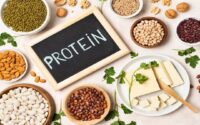Creating Your Fat Loss Diet
 Creating Your Fat Loss Diet: A Comprehensive Approach to a Healthier You
Creating Your Fat Loss Diet: A Comprehensive Approach to a Healthier You
Embarking on a journey of fat loss is a commitment that requires mindfulness, perseverance, and an understanding of one’s body. It’s a path paved with challenges, but with the right strategy, these obstacles can turn into stepping stones towards achieving your health goals. Designing a personalized fat loss diet is a cornerstone in this journey. This comprehensive guide aims at unpacking the essence of creating an effective and sustainable fat loss diet.
Understanding the Basics of Fat Loss
Before diving into the specifics of diet creation, it’s crucial to understand the foundational principles of fat loss. The energy balance equation – calories in versus calories out – dictates weight change. Consuming fewer calories than you expend leads to fat loss, while consuming more results in weight gain. However, this oversimplified view doesn’t account for the nutrient quality of those calories and how they affect our body’s metabolism, hormonal balance, and satiety levels. Therefore, a sophisticated approach to fat loss not only considers the quantity of food but also its quality.
The Role of Macronutrients
The three macronutrients – carbohydrates, proteins, and fats – play unique roles in our body’s metabolism and our feelings of fullness. A fat loss diet should not vilify any of these macronutrients but rather understand their place and proportion in a balanced diet.
– **Proteins**: Vital for muscle repair and growth, protein should be a cornerstone of your diet. High protein intake is associated with increased satiety and a higher thermic effect of food, meaning more calories are burned digesting protein.
– **Carbohydrates**: Often misunderstood, carbohydrates are essential for providing energy, especially for those engaging in regular physical activity. Focusing on complex carbohydrates that are high in fiber can help manage blood sugar levels and keep you fuller for longer.
– **Fats**: Essential for hormonal balance and cell structure, fats should not be entirely avoided. Opting for healthy fats from sources like avocados, nuts, and olive oil can enhance satiety without jeopardizing your diet.
Calculating Your Caloric Needs
Understanding your Total Daily Energy Expenditure (TDEE) is crucial for setting up a caloric deficit conducive to fat loss. Various online calculators can provide an estimate based on your age, gender, weight, height, and activity level. Caloric deficit of 600-800 calories below your TDEE is often recommended for sustainable fat loss – predominantly fat rather than muscle mass.
Planning Your Meals
Equipped with knowledge about your caloric needs and macronutrient distribution, the next step is planning your meals. Variety is crucial to ensure you’re getting a broad spectrum of vitamins and minerals essential for your body’s functioning. Including a protein source in every meal, opting for fiber-rich carbs, and incorporating healthy fats can make your meals balanced and satisfying. Meal planning also helps mitigate the risk of impulsive eating, which can derail your diet.
Sustainability is Key
Perhaps the most overlooked aspect of a fat loss diet is its sustainability. Extreme diets promising rapid results often lead to quick regress, making it essential to craft a diet you can adhere to long term. This includes allowing for occasional treats, understanding that social occasions will happen, and learning to make healthier choices when dining out.
The Psychological Aspect of Dieting
A successful fat loss journey is as much a mental challenge as it is physical. Setting realistic goals, tracking progress in ways beyond the scale and cultivating a supportive environment can make all the difference. Remember, progress is rarely linear, and patience is your ally.
Conclusion
Fat loss diet is not about restrictions but about making informed, mindful choices. It requires a balance of the right nutrients, a sustainable approach, and a positive mindset. Outlined above, you are well on your way to designing a diet that not only leads to fat loss but also fosters a healthier, happier you. Remember, the goal is not just to lose fat but to create a lifestyle that empowers and sustains your health.

